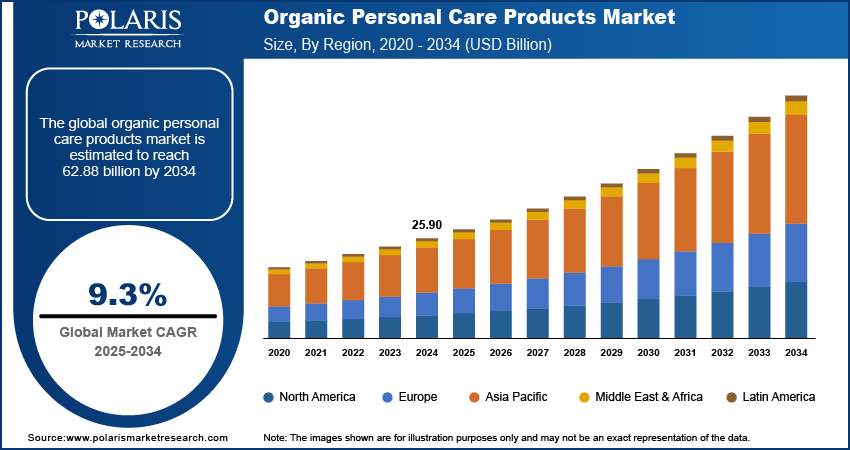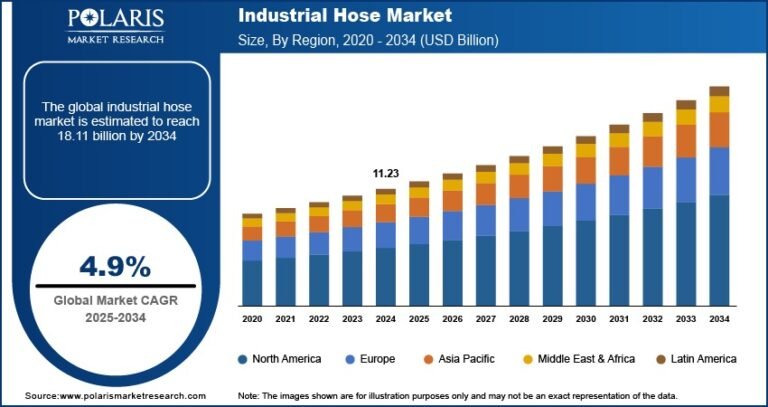Organic Personal Care Products Market Projected to Reach USD 62.88 Billion by 2034, Expanding at a CAGR of 9.3%

The organic personal care products market size was valued at USD 25.90 billion in 2024. The market is projected to grow from USD 28.25 billion in 2025 to USD 62.88 billion by 2034, exhibiting a CAGR of 9.3% during 2025–2034.
Key Market Trends & Insights
- Clean Beauty Movement: The rise of clean beauty is fueling demand for organic personal care products free from parabens, sulfates, and artificial fragrances.
- Growth in E-commerce: Online platforms are playing a vital role in product accessibility, brand visibility, and consumer education.
- Sustainable Packaging: Brands are transitioning to eco-friendly, recyclable, or biodegradable packaging to meet sustainability goals.
- Natural Ingredients Innovation: Companies are investing in advanced formulations using botanicals, essential oils, and plant-based actives.
- Influencer & Celebrity Marketing: Endorsements by influencers and celebrities are influencing buying behavior and driving brand engagement.
Market Size & Forecast
- Market size value in 2025 – USD 28.25 billion
- Revenue forecast in 2034 – USD 62.88 billion
- CAGR – 9.3% during 2025–2034.
Market Overview
The Organic Personal Care Products Market comprises a broad range of items such as skincare, haircare, oral care, and cosmetics that are made using naturally derived and organically certified ingredients. Consumers are increasingly shifting toward chemical-free, non-toxic, and eco-conscious alternatives, driven by growing awareness of health, sustainability, and ethical sourcing. This shift is pushing manufacturers to innovate and reconfigure their product lines in alignment with organic standards.
Request for Free Sample:
Key Market Growth Drivers
- Increasing Health and Environmental Awareness
Consumers are more conscious of harmful chemicals and their environmental impact, boosting demand for organic alternatives. - Rising Disposable Income and Demand for Premium Products
Higher incomes are enabling consumers to invest in high-quality, organic personal care items. - Government Support and Organic Certification Programs
Regulatory bodies are promoting organic standards, increasing consumer trust and market credibility. - Growing Popularity of Ethical and Sustainable Consumerism
Shoppers prefer brands that prioritize cruelty-free, vegan, and eco-friendly practices. - Expansion of Male Grooming and Baby Care Organic Segments
Rising interest in organic products among men and parents is expanding market scope.
Market Challenges
- Higher Production and Retail Costs Compared to Conventional Products
Organic ingredients and certifications increase overall product costs, limiting affordability. - Shorter Shelf Life Due to Absence of Synthetic Preservatives
Natural formulations often have reduced shelf life, complicating logistics and storage. - Greenwashing and Inconsistent Labeling Practices
Misleading claims about being “organic” erode consumer trust and create market confusion. - Limited Penetration in Emerging and Price-sensitive Markets
Low awareness and high prices restrict adoption in developing regions. - Supply Chain and Raw Material Sourcing Issues
Obtaining certified organic ingredients consistently and sustainably remains a logistical challenge.






